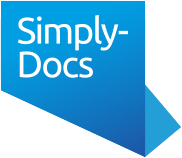What is the new legislation?It’s possible that you may have missed the recent new law on allergen labelling for food and drink products sold to consumers. From 13th December 2014 strict new rules apply to how businesses must notify consumers about food and drink products containing allergens. The Regulations include a list of 14 allergen groups and the presence of any of these listed allergens in the food product must be clearly communicated to the consumer. It’s estimated that over 2 million people in the UK have a food allergy, and the new legislation is designed to make it easier for consumers to make safe food choices when buying food and eating out.
This may mean considerable changes to the way you run your food business at the moment but you really can’t afford to ignore these changes as the penalties include fines and criminal prosecution.
What products do the rules apply to?
The rules apply to prepacked food, non-prepacked food and food that is prepacked for direct sale to consumers such as in a deli or canteen, so most Food Business Operators are going to be affected by these new Regulations. The Regulations also apply to the use of processing aids which contain an allergen from the list of 14 allergen groups, such as wheat flour used to roll out dough made from rye flour. So as well as reviewing your own labelling procedures you also need to ensure that your suppliers are providing you with the necessary information on their products.
For some businesses providing non-prepacked food it is possible to give the information to consumers orally. This should make compliance with the Regulations easier to cope with for some businesses. For more information on the provision of allergen notification orally please click here for Allergen Notification Requirements For Businesses Providing Non-prepacked Foods.
What should you do now?
If you have not yet acted on these Regulations you need to act fast and Simply-docs can help you with this by providing;
• Free information on what you need to do, including a detailed list of the 14 key allergen groups. Click here for Simply-docs free information pages on allergen notification.
A Simply-docs subscription will give you access to;
• Guidance Notes to take you through the issues to consider click here.
• An Allergen Policy click here.
• Simply-docs also provides key templates to use on a day to day basis to manage and monitor the allergens present in your food products, for a Recipe Allergen Checklist, a Supplier Allergen Checklist and a Delivered Product – Supplier Notification of Allergens Form click here.
Simply-docs documents are easy to use and as well as helping you to establish good legal compliance procedures we also have straight forward templates that can be used on a day to day basis to manage and monitor your processes. A subscription to Simply-docs includes the above documents and also gives you access to thousands of straight forward business documents in 5 portfolios; Business, Corporate, Employment, Property and Health and Safety. To download any of these documents click here if you already subscribe to Simply-Docs or to get started today, register with Simply-Docs by clicking here.
We always welcome suggestions for new documents for our site, so do let us know if there are additional allergen related documents that would help out your business. We will give our full consideration to any new document suggestions.


